Key Lessons Learned
On the key lessons learned, I think there are two big ones. First is clearly the NIC. If you want something small, but also with a low-profile PCIe slot, this is an inexpensive option. There are tons of these systems that will be decommissioned over the next few years and so after the “STH Effect” wears off prices should stay lower. This is a good value option if you simply want to add a NIC for more network ports.
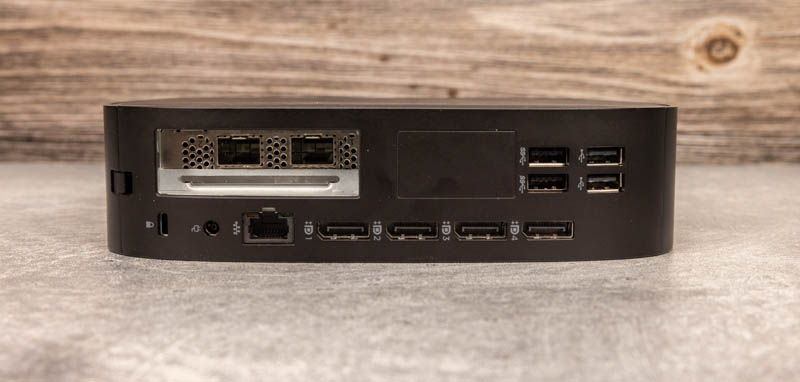
Having additional network ports is handy. For example, one can use this system with virtualized pfSense and run Proxmox VE as the Debian-based Linux host. Having additional NICs means one can have a dedicated ingress and egress NIC. The onboard Realtek NIC can be used as a management interface port for Proxmox VE or another hypervisor. This is a very flexible solution.
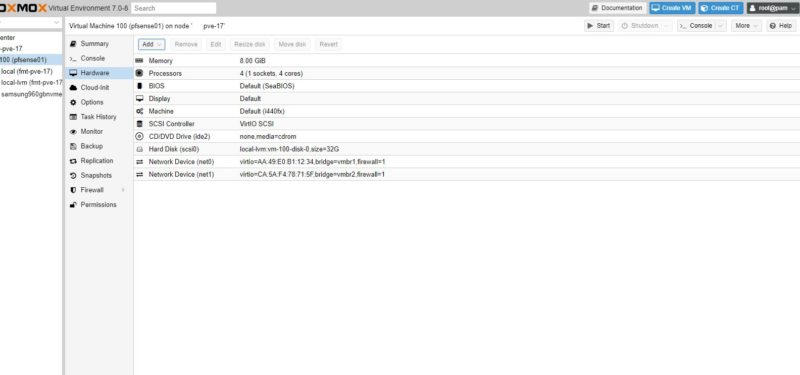
Still, the challenge comes down to is it worthwhile. In terms of performance and power consumption, the AMD Ryzen embedded CPU is good, but it is nowhere near as low power as some of the other embedded options on the market. That means we can get fairly high maximum power consumption figures when running high loads.
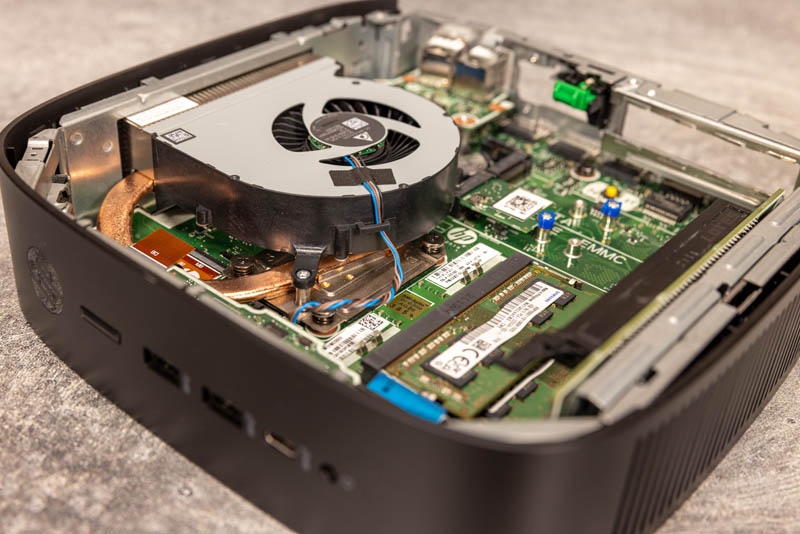
If you are not using the low-profile PCIe card slot, then this becomes a more challenging recommendation. It is larger, over twice the volume. We got less networking, memory, and storage (also no Windows Pro license) for our money than we would have with a Project TinyMiniMicro node but that pricing varies.
Final Words
Something we constantly struggle with on STH is timing when we do these reviews. As a thin client PC, the AMD Ryzen Embedded V1756B is a massively over-specd part. This is a processor capable of delivering a solid local desktop performance, not just as a remote desktop thin client box.
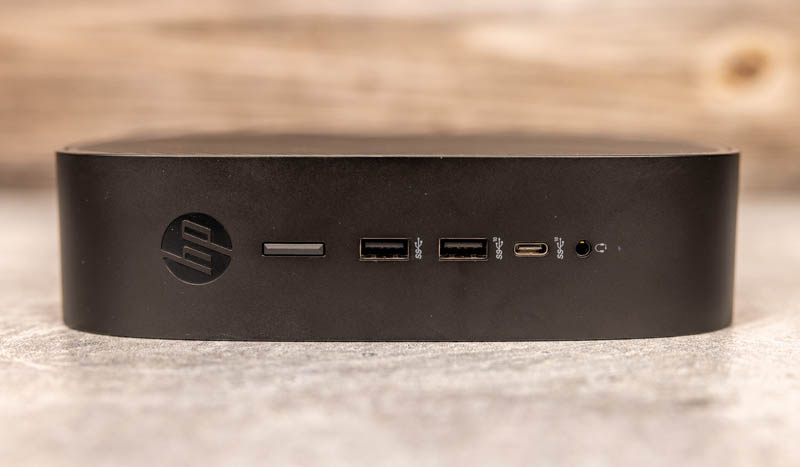
As a thin client, it is perhaps too much. As a future project TinyMiniMicro node alternative, things get more interesting. We get many similar expansion specs as we do with the more compact 1L nodes. The big exception is that low profile PCIe slot. If you want to have a NIC in a small node, this is probably a better option. The ability to build a still relatively compact system with two SSDs and a quad-port NIC, for example, all with a substantial CPU means that this is a fairly interesting edge computing box. It is certainly more so than the HP T620 Plus these days.
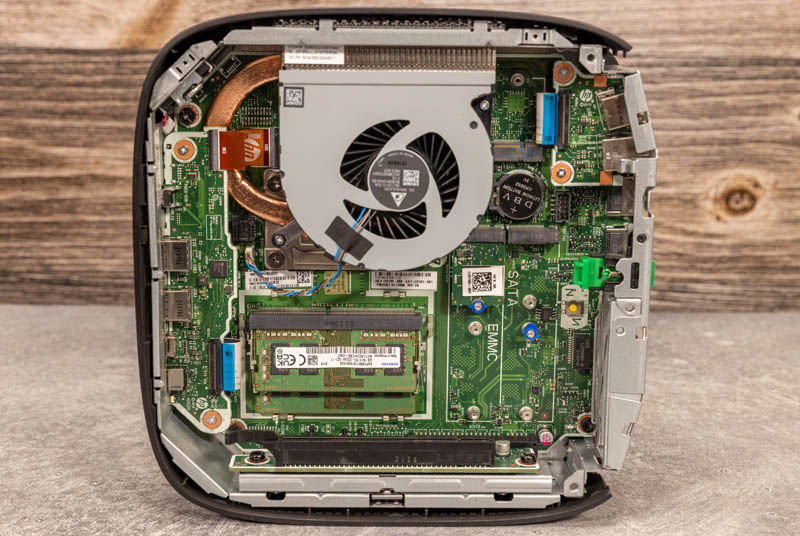
At this point, availability on the secondary market is still not great, but we are seeing them sell for sub-$300 often. In the future, as prices fall, these may end up being gems. If you need an additional PCIe slot and are OK with the AMD Ryzen V1756B, then this becomes a great option. If you do not need the PCIe slot, then it will come down to pricing at sub-$300, this is a great little system. In the future, hopefully, those prices fall.
For those lamenting at the fact that we have not done as many AMD Ryzen TinyMiniMicro reviews, hopefully, this helps hold you over. We have two HP EliteDesk 805’s inbound and are already testing a Lenovo unit. That Lenovo unit is going to have some really eye-opening results. Stay turned for more on that front on STH.




Thanks for this. Been looking for a thin client with PCIE capability (and up-to-date hardware) for robotics applications for a while. This fits the bill perfectly.
My biggest gripe with the most of the NUCs or 1L units has been the lack of PCIe slots. This is a pretty nice little package, even at 2.2L. Nice review, absolutely love this series and its tangents.
I wonder what the exact target market for these things was. I assume that HP had one in mind; but anywhere I’ve worked “people we stick on thin clients” and “people who need 4 monitors” were largely disjoint groups.
HP’s t740 QuickSpecs PDF says it supports DASH OoB management. Anyone try this? (Maybe I missed it in review…)
Any idea whether ECC RAM is supported? I think the V1756B is capable… but can’t tell whether the t740 is.
> I wonder what the exact target market for these things was. I assume that HP had one in mind; but anywhere I’ve worked “people we stick on thin clients” and “people who need 4 monitors” were largely disjoint groups.
In my head the target market are engineering, cad, design and such which use this as a “thin” client to access much more high performance set ups. Or maybe this thing as a daytrader or similiar information brokerage needer?
Does anything other than Lenovo Tinys (an THIS) have PCI-e expansions? Specifically for additional ethernet NIC
I have got this.
32GB ram, 128GB + 1TB ssd, intel i350 4 port card, esxi test host, pfsense, unifi controller, windows 10 test machine.
Excellent choice, i bought it before the prices has been increased.
I tried with 4X10gbe card, the lan card required active cooling.
I bought a T640 (fanless, unlike T740) to use as a silent desktop to use when all I’m doing is browsing or watching videos. But then I found that it has some bad coil whine, depending on what power brick I use.
Speaking of DASH management, I tried it on my T640, and apparently it’s an implementation that lacks IP-KVM. According to some PDF, the Elite desktops have KVM, but the T640 does not.
Even weirder, the serial over LAN didn’t seem to work, and attempting to put the Linux console on one of the Realtek DASH serial ports resulted in some bizarre hangs where the OS went comatose. It’s as if any attempt to write to the FIFO never returned!
I don’t have one to check, but it wouldn’t surprise me if DASH on the T740 is broken just like on the T640.
Re: Damian
I use Dell Wyse 5070 Extended Thin Client (https://www.dell.com/support/manuals/en-us/wyse-5070-thin-client/5070_extd_ug/welcome-to-dell-wyse-5070-extended-thin-client).
It may come with discrete AMD graphics in PCIe slot – I replaced it with Intel Dual 1GbE card.
It serves very well as pfSense box :)
Krysiek – We now have one with a GPU in the studio.
I tried this with a HP T730 and it worked well. The T740 is still a currently sold HP product and the prices are still high. The T730 is older and can still be found for under $150 on ebay.
Loved the HP T740 after seeing the STH review on YouTube so I got one but mine came with an Admin password in the BIOS that has so far proven impossible to remove, I’ve reset the password jumper, pressed the Clear CMOS button on the motherboard, even removed the CMOS battery but the password is still there. Does the BIOS come locked like that from HP? Its preventing me from turning on hardware virtualization, changing the boot options or even allocating more RAM to the graphics.
@Alex
I am also curious about that. I’m looking to purchase one on ebay but they say it has a BIOS password that they weren’t able to clear. Is there a way to clear ALL passwords on this?? Even the Startup Password??
I wonder what the noise level is, as a cheap 10gbe nvme NAS
Do you guys at STH think you may have any sway to get HP to fix an issue with the BIOS of this T740 Thin Client? I bought it based on your review here and am mostly happy with it. However, the setting in the BIOS for “Fan Idle Mode” does not work. I documented it here:
https://forums.servethehome.com/index.php?threads/hp-t740-fan-control-not-working.38021/
I contacted HP and they want me to send the unit in for repair. I’m sure this is not a repair issue and a BIOS issue especially since the fan works perfectly and does spin up faster when the CPU heats up. Sending the unit to HP would be pointless. Thanks for any help!
Sadly Craig, we are not going to get you anything better than HP support for this type of request. We do not know the HP support folks well.
Thanks Patrick. When I called HP, they told me that if I had ten or more units than they would look into it, but not for one :-(